Vietnam’s rich coffee culture is a captivating blend of history, innovation, and distinctive flavors. From the iconic egg coffee to the refreshing coconut brew, Vietnamese coffee-making traditions offer a unique window into the country’s vibrant culinary landscape. By mastering the techniques of the traditional ‘phin’ filter and exploring innovative ingredient pairings, participants in a Vietnamese coffee class can enjoy the flavorful world of this beloved beverage. What secrets and surprises might this immersive experience unveil about the heart and soul of Vietnamese culture?
This experience made our list of the 21 Best Coffee Tours And Tastings In Hoi An.
Key Points
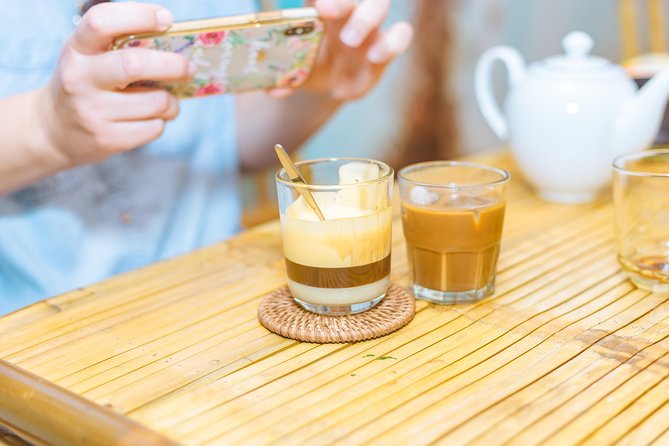
- Explore the deep-rooted Vietnamese coffee culture and its history, from colonial introduction to becoming an integral part of the nation’s identity.
- Learn the distinctive brewing methods and traditional tools, such as the Vietnamese coffee filter (phin), used to craft bold and intense coffee drinks.
- Discover the diverse range of unique Vietnamese coffee specialties, including egg coffee, coconut coffee, salt coffee, and milk coffee, each with its own captivating story.
- Understand the importance of sustainably sourced and high-quality coffee beans in the Vietnamese coffee industry, and how this focus has led to the rise of specialty coffee.
- Gain hands-on experience in preparing and serving traditional Vietnamese coffee drinks, while immersing in the country’s rich coffee-drinking customs and social traditions.
Vietnamese Coffee Culture

Coffee is deeply ingrained in Vietnamese culture, with its rich history tracing back centuries and its enduring significance woven into the daily lives of the people.
The country’s tropical climate and fertile soil provide ideal conditions for growing high-quality arabica and robusta beans, which have become a source of national pride.
Vietnamese coffee is renowned for its bold, intense flavor, often served with a thick, creamy texture.
From the iconic Vietnamese drip coffee filter (phin) to the beloved egg coffee and coconut coffee, the country’s coffee traditions reflect a deep appreciation for the beverage and its ability to bring people together.
Coffee has become an integral part of Vietnam’s vibrant culture and social fabric.
Here are more great tours and experiences we've reviewed in Hoi An
Overview of Coffee Drinks
Vietnam’s coffee culture encompasses a wide array of unique and distinctive coffee drinks, each with its own captivating history and flavor profile. From the indulgent egg coffee to the refreshing coconut coffee, Vietnamese coffee offers a delightful sensory experience.
The traditional Vietnamese coffee, brewed using a small metal filter called a ‘phin,’ is a beloved staple, delivering a strong, robust flavor. Salt coffee, made by adding a pinch of salt to the brew, provides a unique twist, while milk coffee offers a creamy, smooth sip.
These diverse coffee creations reflect the ingenuity and rich heritage of Vietnam’s vibrant coffee scene, inviting visitors to embark on a flavorful journey through the country’s cherished caffeine traditions.
History of Vietnamese Coffee
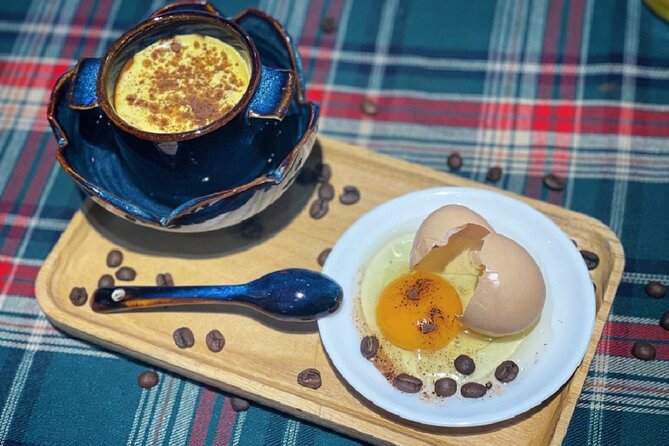
The history of coffee in Vietnam can be traced back to the late 19th century, when French colonists first introduced the crop to the region.
Initially, coffee cultivation was limited to the highlands, but it gradually spread throughout the country.
During the 20th century, coffee became an integral part of Vietnamese culture, with distinctive brewing methods and unique flavor profiles emerging.
Today, Vietnam is the world’s second-largest producer of coffee, with robusta beans being the dominant variety.
The country’s coffee industry has evolved significantly, with a growing focus on specialty coffee and sustainable practices.
Vietnamese coffee has gained global recognition for its rich, bold taste and is now enjoyed worldwide.
Making Egg Coffee
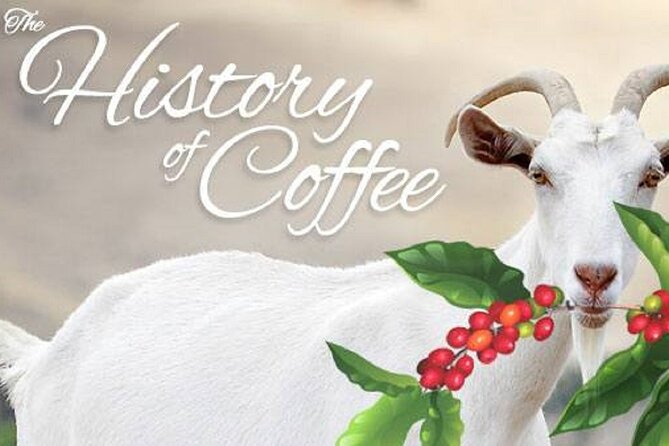
One of the most iconic Vietnamese coffee drinks is egg coffee, which features a rich, creamy foam made from whipped egg yolks and sweetened condensed milk.
To make egg coffee, the instructor first brews a strong, bold Vietnamese coffee. Then, they separate the egg yolks from the whites and whisk them vigorously until they’re light and airy. The egg yolk mixture is gently folded into the hot coffee, creating a luxurious, indulgent texture and flavor.
Some key steps in making egg coffee include:
- Brewing a robust Vietnamese coffee
- Whipping egg yolks until light and frothy
- Gently folding the egg yolks into the hot coffee
The result is a unique and delightful Vietnamese coffee experience.
Crafting Coconut Coffee
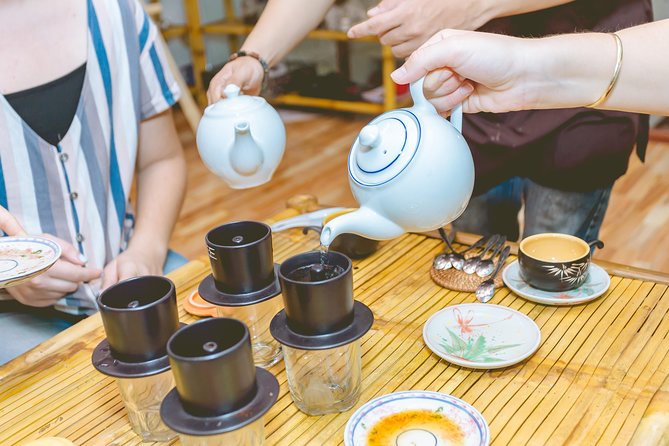
Among the diverse array of Vietnamese coffee offerings, crafting coconut coffee holds a special allure. The barista begins by brewing a robust Vietnamese coffee, then skillfully incorporates freshly grated coconut into the hot brew, creating a harmonious blend of bold, earthy flavors and sweet, creamy notes.
The addition of coconut milk or cream further enhances the drink’s velvety texture and imparts a tropical twist. Sipping on this rich, indulgent beverage is a true delight, transporting one’s senses to the lush landscapes of Vietnam.
Coconut coffee is a testament to the ingenuity of Vietnamese coffee culture, showcasing the country’s ability to seamlessly fuse traditional practices with modern interpretations.
Here are more great tours and experiences we've reviewed in Hoi An
Preparing Salt Coffee

Building upon the captivating experience of crafting coconut coffee, Vietnamese coffee enthusiasts now turn their attention to the unique and nuanced preparation of salt coffee.
This distinctive brew is created by carefully balancing the saltiness with the rich, bold flavors of Vietnamese coffee. The process involves:
- Mixing a precise amount of salt into the coffee grounds before brewing.
- Slowly pouring hot water over the salted grounds, allowing the flavors to meld.
- Adjusting the salt-to-coffee ratio to achieve the desired balance of savory and sweet.
The result is a one-of-a-kind coffee experience that delights the senses and pays homage to Vietnam’s ingenuity in crafting innovative coffee traditions.
Serving Milk Coffee
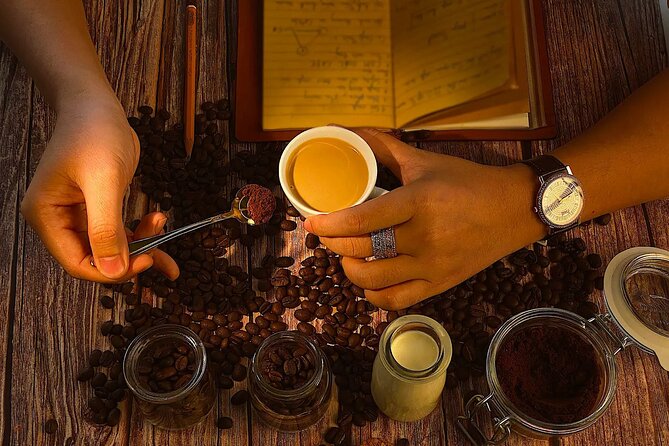
After mastering the delicate balance of salt coffee, the workshop participants move on to explore the classic Vietnamese milk coffee.
They learn how the smooth, creamy texture of condensed milk complements the bold, robust flavor of the dark-roasted Vietnamese beans.
The instructor demonstrates the proper ratio of coffee to condensed milk, emphasizing the importance of stirring the mixture thoroughly to create a homogeneous, velvety texture.
Participants then practice pouring the milk coffee into small glasses, admiring the distinct layers as the dark coffee sinks below the pale, creamy milk.
Using the Vietnamese Coffee Filter

The instructor guides the participants through using the traditional Vietnamese coffee filter, known as a ‘phin’. They learn how to properly assemble the phin’s components – the filter base, the perforated plate, and the cap – to brew a perfect cup of Vietnamese coffee.
The instructor emphasizes three key steps:
- Place the phin on top of the cup and add a small amount of hot water to pre-heat the filter.
- Add the ground coffee to the phin, gently tapping it to level the surface.
- Slowly pour hot water over the coffee, allowing it to slowly drip through the filter into the cup below.
With the instructor’s guidance, the participants master the art of using the phin to create the signature strong, full-bodied Vietnamese coffee.
Frequently Asked Questions
Is This Activity Suitable for Children?
The activity seems suitable for children, as it includes infant seats and is wheelchair accessible, suggesting accommodations for families. The hands-on coffee-making experience could be engaging and educational for kids. However, the details around age appropriateness are not provided.
What Should I Wear to the Coffee-Making Class?
For a coffee-making class, wear comfortable, casual clothing. Opt for breathable fabrics that allow you to move easily during the hands-on activities. Avoid overly formal attire, as the focus will be on the coffee-making experience itself.
Can I Bring My Own Coffee Beans to Use?
Yes, participants can typically bring their own coffee beans to use during the class. The instructors will provide guidance on brewing methods and techniques, regardless of the coffee beans used.
Is It Possible to Customize the Coffee Drinks?
Yes, participants can typically customize their coffee drinks during the class. The instructor is often willing to accommodate requests and make adjustments to the standard recipes based on individual preferences.
Do You Offer Vegetarian or Vegan Coffee Options?
Yes, the workshop offers vegetarian and vegan coffee options. Participants can customize their drinks to suit dietary preferences, choosing plant-based milks or non-dairy creams instead of traditional dairy products.
Recap
Participants in a Vietnamese coffee-making class will enjoy the country’s rich coffee culture.
They’ll learn to craft iconic beverages like egg coffee and coconut coffee, mastering the traditional Vietnamese coffee filter and blending unique ingredients.
This class offers a flavorful and vibrant exploration of Vietnam’s innovative approaches to coffee preparation and its deep cultural connection to this beloved beverage.
More Workshops & Classes in Hoi An
More Coffee Experiences in Hoi An
- Hoi An: Vietnamese Coffee Making Course
- Hoi An: the Art of Coffee With a Multi-Award Winning Barista
- 2-Hour Coffee Making and Testing Experience in Hoi An
- Exploring Vietnamese Coffee Culture, Coffee Making in Hoi An
- COFFEE MAKING AND TASTING EXPERIENCE
- Explore Marble and Monkey Mountain With Coffee Making Course
More Tour Reviews in Hoi An
- Hoi An Ancient Town & the Memories Show: Half-Day Tour
- Da Nang: Marble Mountains, Cam Thanh & Hoi An Full-Day Tour
- My Son Sanctuary & Hoi An City Shore Excursion Private Tour
- Hoi An River Life Private Photography Tour
- South Hoi An River Safari With Candle-lit Beach Dinner
- From Hoi An: Explore Ruins of My Son Private Tour
Not for you? Here's more things to do in Hoi An we have recnetly reviewed
- Hoi An: Private Cycling to My Son Sanctuary With Local Guide
- Easy Rider Hoi An to My Son Sanctuary – Marble Mountain
- Da Nang & Hoi an City : Private Tour of Top Highlights
- Private Full Day Tour Danang & Hoi an Hightlights
- Da Nang: My Son Holly Land & Marble Mountain by Private
- Hoi An: My Son Private Tour With Cham Dance Performance
- From Da Nang: 4 Days 3 Nights in Central Vietnam Highlights
- Hoi An: Full-day My Lai Massacre Memory Tour
- From Tiên Sa Port: Da Nang And Hoi An City Sightseeing Tour
- Hoi An: Loc Yen Ancient Village And O O Waterfall Adventure
- Da Nang: 2-Day Tour to Marble Mountains, Hoi An, and Ba Na
- Ha Noi: HALONG EXCURSION DAY TOUR ON 5-STAR LUXURY CRUISE
